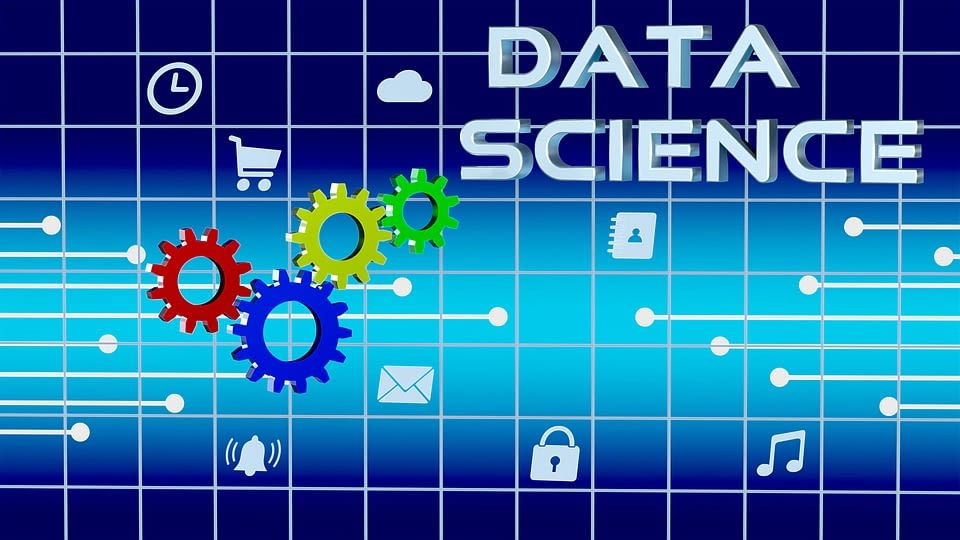
Data Science with Machine Learning , Deep Learning & AI
Chapter 1
Introduction
-
What is data science
-
What is machine learning?
-
What is Deep learning?
-
Difference between DS and ML and AI and DL
Chapter -2
Basics of python
-
Installing python
-
Different IDES
-
Variables
-
Data types
-
Loop
-
function
-
module and package
-
object oriented programming
-
python packages numpy,sklearn,matplotlib,pandas
-
Working with ANACONDA
Chapter -3
Numpy
-
Introduction to Numpy
-
Creating numpy array
-
Attributes of numpy array
-
Advantage of Numpy array over List
-
Mathematical operation on numpy array
-
Different ways to create numpy array
-
Reshaping numpy array
-
Concatenation and splitting operation
-
Trigonometric functions
-
Random sample generation
Chapter -4
Data analysis with Pandas
-
Pandas series
-
Pandas data frame
-
Reading CSV files
-
Parameters of read_csv()
-
Read excel files
-
Handling missing values
-
categorical data
-
Data cleaning and pre processing
Chapter -5
Data Visualization
Matplotlib
Seaborn
Chapter-6
Regression
-
Linear Regression
-
Multiple linear regression
-
Polynomial Regression
-
Logistic regression
Chapter-7
Logistic Regression
-
Introduction
-
Logistic function or sigmoid function
-
Types of logistic regression
-
Implementation
Chapter-8
K-Nearest Neighbors Algorithm
-
How KNN works
-
KNN classifier
-
Confusion Matrix
-
KNN Regressor
-
How to choose k value
Chapter -9
Naïve Bayes Algorithm
-
Bayes Theorem
-
Types of naïve bayes classifier
-
Bernoulli naïve bayes
-
Gaussian Naïve
-
Multinomial NB
-
Text Processing
Chapter -10
Decision Tree Algorithm
-
Why to use decision trees?
-
Decision Tree Terminologies
-
How a decision tree works
-
Advantages and disadvantages
Chapter -11
Random Forest Algorithm
-
What is random forest
-
How random forest works
-
Ensemble learning
-
Bagging and boosting
-
Advantages and disadvantages
Chapter -12
Support vector machine
-
What is support vector machine?
-
Types of SVM
-
Hyper plane and support vectors
-
How support vector works?
Chapter-13
Unsupervised Learning
-
What is unsupervised learning
-
Types of unsupervised learning
-
Applications of unsupervised learning
-
K-means clustering
Chapter 14
Feature engineering and Dimensional Reduction
-
feature extraction
-
feature selection
-
dummy variable and one hot encoding
-
Label encoding and ordinal encoding
-
Feature scaling
-
Hyper parameter tuning
-
dimension reduction (feature reduction)
Chapter-15
Model selection
-
What is Model Selection?
-
The need for Model Selection
-
Cross-Validation
-
What is Boosting?
-
How Boosting Algorithms work?
-
Types of Boosting Algorithms
Chapter -16
Time series prediction
-
What is Time Series Analysis?
-
Importance of TSA
-
Components of TSA
-
White Noise
-
AR model
-
MA model
-
ARMA model
-
ARIMA model
Chapter -17
Neural Network (Deep learning)
-
What is Neural Network
-
What is neuron and how it works
-
How neural network works
-
Perceptron and multi-layer neural network
-
Types of neural networks
-
Implementing ANN using keras
-
CNN(convolution Neural Network )
Chapter -18
NLP (natural Language processing)
-
Why Natural Language Processing (NLP)
-
Applications of Text Mining
-
Reading, Writing to text and word files
-
Setting the NLTK Environment
-
Accessing the NLTK Corpora
-
Tokenization
-
Frequency Distribution
-
Different Types of Tokenizers
-
Bigrams, Trigrams & Ngrams
-
Stemming
-
Lemmatization
-
Stopwords
Chapter-19
Project work
Trainer
Prof Ranjan Das
Mrp Price
₹ 50000
Discount In Percentage
40% off
Discounted Fee
₹ 30000
Duration
100 Hr